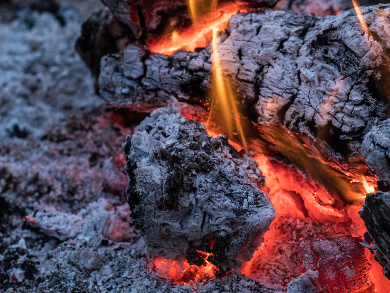Titanium dioxide (TiO2) has eight modifications, with the three most common being rutile, anatase, and brookite. Titania suboxides with the formula TixO2x−1 (4 ≤ x ≤ 9) can form so-called Magnéli phases, which are structurally similar to rutile. These phases are usually very rarely observed in nature.
Michael F. Hochella, Jr., Virginia Tech, Blacksburg, USA, and Pacific Northwest National Laboratory, Richland, WA, USA, and colleagues have discovered that industrial coal burning can produce large quantities of the otherwise rare Magnéli phases. The team collected sediment close to a coal ash spill site as well as ash from different coal-burning plants and analyzed the samples using inductively coupled plasma mass spectrometry (ICP-MS) and selected area electron diffraction (SAED). They detected Magnéli phases in all samples. The TixO2x−1 particles have sizes in the nanometer range.
The Magnéli phases are not found in coal itself, but are formed from TiO2 minerals naturally present in coal under the combustion conditions. According to the researchers, the discovery of this rarely found species in coal ash could allow the tracking of solid-state emissions from coal burning. The team points out that, considering the amount of coal burnt in the last centuries, these phases should be widely distributed in the environment by now. Due to their nanoscale size, the particles could be inhaled and their toxicity should be tested.
- Discovery and ramifications of incidental Magnéli phase generation and release from industrial coal-burning,
Yi Yang, Bo Chen, James Hower, Michael Schindler, Christopher Winkler, Jessica Brandt, Richard Di Giulio, Jianping Ge, Min Liu, Yuhao Fu, Lijun Zhang, Yuru Chen, Shashank Priya, Michael F. Hochella,
Nature Commun. 2017.
DOI: 10.1038/s41467-017-00276-2



